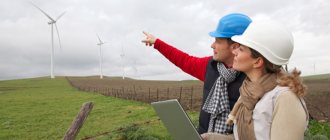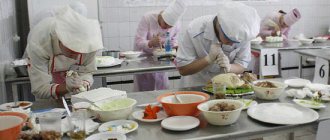General provisions
To get this position, you need to be a professional with a higher technical education. In addition, the candidate is usually required to have been employed in the field in which the organization operates for at least five years. It is worth noting that during this period the candidate must occupy exclusively management and engineering positions. In the absence of a specialist holding the post of chief technologist, his responsibilities are transferred to his immediate deputy. Moreover, if necessary, it is he who will be responsible for the efficiency, quality and timing of the work.
Working time distribution
Now let's talk about the principle of operation of the technology department. A technologist should spend about 50% of his working time in production. During this time, he needs to go through the entire technological chain, take selective measurements of raw materials and products, visually inspect the quality of the products, see where the technology is not being followed and what needs to be done to improve the operation of this section.
While in production, the technologist collects information about work from operators, mechanics, electricians, and this information must be filtered and be able to distinguish right from wrong. Today, many industries are fully automated and therefore the collection of accurate information is simplified. During this time, logs of product quality control, technological downtime, and equipment operating modes are inspected.
The other half of his time, the technologist is developing various operating modes, product flow patterns, reducing product costs, and composition.
The chief technologist, due to his work, should be in production much less; it is initially assumed that he knows production well. His tasks have already been expanded and he is engaged not only in internal production optimization, but also works with third-party organizations. For example, he is looking for new suppliers of cheaper or higher quality tools, he may be engaged in the selection of various adhesives, or something else... If a technologist draws up any reports, then the task of the chief technologist is to coordinate them and control the costs of raw materials.
What you should know
The knowledge of a specialist in this position should include information about the technological preparation of the organization, including from methodological and regulatory materials. He must also understand what the profile of the enterprise is, what its specialization is and how the technological structure of the company is organized; see and understand the prospects for technology development in this industry and ways to improve the efficiency of the organization itself. The chief technologist must know what technology is used to manufacture products at the enterprise where he is employed; understand what methods and systems are used to design, as well as how technological preparation is carried out in production and in this area in general.
His knowledge must relate to the production capacity of the organization; he must know all the technical characteristics, design features of the equipment and the modes in which it operates. The chief technologist of the plant must understand its operation and clearly know the operating rules. Technological preparation should be simple and understandable for him, including its order and methods. He ensures that all the requirements regarding raw materials, supplies and finished goods produced by the organization are followed.
Purpose of the technologist's work
The main goal of a technologist’s work is to set up production and ensure the production of competitive, acceptable quality and inexpensive products.
The main idea of the company and its products is the task of the management, but ensuring the high-quality work of all components depends on the competent decisions of the technologist.
What does an Internet technologist do in production?:
- controls product quality;
- assigns assignments to subordinates;
- establishes contacts with other enterprises, contractors and subcontractors;
- purchases or requests materials needed for work;
- makes nominations when hiring or dismissing;
- raises the issue of penalties and incentives for employees.
First of all, the technologist is subject to the job description, secondly - to the requirements of GOST or Technical Conditions (TU). The process engineer bears personal responsibility for the operation of the enterprise and the production of products, including administrative and criminal responsibility.
Other knowledge
Since the chief technologist must draw up technical documentation, his knowledge should concern all instructions, regulations and other documentation of a guiding type aimed at the development and execution of these papers. He must know by what method mechanization and automation of all processes in production are developed and implemented, as well as by what methods the economic efficiency of introducing modern technologies and techniques, and new rules is determined. Must have an understanding of the organization of the labor process and how rational the proposals and inventions of employees and third-party organizations are.
The department of the chief technologist is responsible for product certification, so he must know its procedure and be able to determine the quality of the goods. It is important that he can use computer technology to design technological processes in production. The chief technologist must understand the order in which the equipment is put into operation. His knowledge should include all the requirements that relate to the rational organization of labor during the design of technological processes. Taking into account the industry in which the enterprise operates, the chief technologist must monitor all new products and adopt foreign and domestic experience of competitors, understand the basics of organizing production, management and economics; know the legislation in the field of environmental protection, labor law and labor protection requirements.
I. General provisions
- The chief technologist belongs to the category of managers.
- A person with a higher professional (technical) education and professional work experience in engineering, technical and management positions in the relevant industry profile of the enterprise for at least 5 years is appointed to the position of chief technologist.
- Appointment to the position of chief technologist and dismissal from it are made by order of the director of the enterprise.
- The chief technologist must know: 4.1. Regulatory and methodological materials on technological preparation of production.
- 4.2. Profile of specialization and features of the organizational and technological structure of the enterprise.
- 4.3. Technology of production of the enterprise's products.
- 4.4. Systems and design methods.
- 4.5. Organization of technological preparation of production in the industry and at the enterprise.
- 4.6. Production capacities, technical characteristics, design features and operating modes for planning technological preparation of production.
- 4.7. Technical requirements for raw materials, materials and finished products.
- 4.8. Regulations, instructions and other guidance materials for the development and execution of technical documentation.
- 4.9. Means of mechanization and automation of production processes.
- 4.10. Methods for determining the economic efficiency of introducing new equipment and technology, labor organization, rationalization proposals and inventions.
- 4.11. The procedure for certification of the quality of industrial products.
- 4.12. Possibilities of using computer technology and methods for designing technological processes using them.
- 4.13. The procedure for accepting equipment into operation.
- 4.14. Requirements for rational organization of labor in the design of technological processes.
- 4.15. Domestic and foreign achievements of science and technology in the relevant industry.
- 4.16. Advanced domestic and foreign experience in the production of similar products.
- 4.17. Fundamentals of economics, organization of production, labor and management.
- 4.18. Fundamentals of environmental legislation.
- 4.19. Labor protection rules and regulations.
Main job responsibilities
The job responsibilities of the chief technologist include, first of all, carrying out instructions from senior management. In addition, he must organize the development and implementation of technological processes and modes. Moreover, they must not only be justified from an economic point of view, but also progressive, not harmful to the environment and conserving natural resources. He must carry out work aimed at increasing the level of preparation of the enterprise from the technological side, which will reduce the consumption of financial investments, the use of raw materials and other production materials, labor, while improving the quality of the products produced or services provided, depending on the field of activity of the organization where a specialist is working.
The chief technologist must develop and put into practice methods that will speed up the process of introducing employees to new equipment, modern materials and other innovations in this area. He manages the process of planned introduction of new equipment and technologies that will make production more efficient. A professional must develop technological documents, organize the provision of all workshops and departments with timely incoming information. If changes in processes require adjustments to company documents, it is the employee in this position who should be responsible for reviewing and approving any changes.
It is the department of the chief technologist that monitors long-term and current plans for preparing technological changes in production methods, checking for violations. And if there are any, he eliminates them in accordance with the instructions of senior management and other instructions relevant to the organization.
JOB DESCRIPTION FOR CHIEF TECHNOLOGIST
1. GENERAL PROVISIONS
1.1. This job description defines the functional responsibilities, rights and responsibilities of the Chief Technologist of the enterprise.
1.2. The chief technologist is appointed to the position and dismissed from the position in the manner established by the current labor legislation by order of the director of the enterprise.
1.3. The chief technologist reports directly to the director of the enterprise.
1.4. A person with a higher professional (technical) education and work experience in the specialty in engineering, technical and management positions in the relevant industry profile of the enterprise is appointed to the position of Chief Technologist.
1.5. The chief technologist must know:
— regulatory and methodological materials on technological preparation of production; profile, specialization and features of the organizational and technological structure of the enterprise; prospects for technical development of the industry and enterprise; production technology of the enterprise's products; systems and design methods; organization of technological preparation of production in the industry and at the enterprise; production capacities, technical characteristics, design features and operating modes of equipment, rules of its operation; procedure and methods for planning technological preparation of production; technical requirements for raw materials, materials and finished products; regulations, instructions and other guidance materials on the development and execution of technical documentation; means of mechanization and automation of production processes; methods for determining the economic efficiency of introducing new equipment and technology, labor organization, rationalization proposals and inventions; procedure for certification of the quality of industrial products; possibilities of using computer technology and methods for designing technological processes using them; procedure for accepting equipment into operation; requirements for rational organization of labor when designing technological processes; domestic and foreign achievements of science and technology in the relevant industry; advanced domestic and foreign experience in the production of similar products; fundamentals of economics, organization of production, labor and management; basics of environmental legislation; basics of labor legislation; rules and regulations of labor protection.
1.6. During the period of temporary absence of the Chief Technologist, his duties are assigned to ___________________________.
2. FUNCTIONAL RESPONSIBILITIES
Note. The functional responsibilities of the Chief Technologist are determined on the basis and to the extent of the qualification characteristics for the position of Chief Technologist and can be supplemented and clarified when preparing a job description based on specific circumstances.
2.1. Organizes the development and implementation of progressive, economically sound, resource- and nature-saving technological processes and modes of production of products manufactured by the enterprise, performance of work (services) that ensure an increase in the level of technological preparation and technical re-equipment of production, reduction of costs of raw materials, materials, labor costs, improvement of product quality , works (services) and labor productivity growth.
2.2. Takes measures to accelerate the development of advanced technological processes, new materials in production, and the widespread introduction of scientific and technical achievements.
2.3. Manages the drawing up of plans for the introduction of new equipment and technology, increasing the technical and economic efficiency of production, the development of technological documentation, and organizes control over the provision of workshops, sites and other production divisions of the enterprise with it.
2.4. Reviews and approves changes made to technical documentation in connection with adjustments to technological processes and production modes.
2.5. Monitors the implementation of long-term and current plans for technological preparation of production, strict adherence to established technological processes, identifies violations of technological discipline and takes measures to eliminate them.
2.6. Manages the organization and planning of new workshops and areas, their specialization, mastering new equipment, new high-performance technological processes, performing calculations of production capacity and equipment loading, increasing the technical level of production and the shift ratio of equipment, drawing up and revising technical conditions and requirements to raw materials, basic and auxiliary materials, semi-finished products, development and implementation of progressive standards for labor costs, consumption of process fuel and electricity, raw materials and supplies, measures to prevent and eliminate defects, reduce the material intensity of products and the labor intensity of their production.
2.7. Ensures the improvement of technology for manufacturing products, performing work (services), introducing achievements of science and technology, progressive basic technologies, high-performance resource- and environmentally-saving non-waste technologies, design and implementation of technological systems, environmental protection means, comprehensive mechanization and automation of production processes, non-standard equipment , technological equipment, fixtures and tools, timely development of design capacities, compliance with standards for the use of equipment.
2.8. Implements measures to certify and rationalize workplaces.
2.9. Participates in the work to determine the range of measured parameters and optimal standards of measurement accuracy, to select the necessary means for their implementation, and to improve methods of product quality control.
2.10. Considers designs of products or product composition, industry and state standards, as well as the most complex rationalization proposals and inventions related to production technology, gives conclusions on their compliance with the requirements of economical and environmentally friendly production technology.
2.11. Coordinates the most complex issues related to technological preparation of production with enterprise departments, design and research organizations, and customer representatives.
2.12. Ensures the implementation of computer-aided design systems, organizational and computer technology, automated control systems for equipment and technological processes.
2.13. Participates in the development of enterprise reconstruction projects, measures to reduce the time required to master new equipment and technology, rational use of production capacity, reduce energy and material consumption of production, increase its efficiency, improve product quality, and improve labor organization.
2.14. Manages the conduct of research and experimental work on the development of newly developed technological processes, participates in industrial testing of new types of machines and mechanisms, means of mechanization and automation of production, and in the work of commissions for the acceptance of equipment systems into operation.
2.15. Manages department employees, coordinates and directs the activities of enterprise divisions that provide technological preparation of production, and organizes work to improve the skills of employees.
3. RIGHTS
The chief technologist has the right:
3.1. Give instructions and tasks to his subordinate employees and services on a range of issues included in his functional responsibilities.
3.2. Monitor the implementation of production tasks, timely execution of individual orders by subordinate services and divisions.
3.3. Request and receive the necessary materials and documents related to the activities of the Chief Technologist, subordinate services and divisions.
3.4. Interact with other enterprises, organizations and institutions on production and other issues within the competence of the Chief Technologist.
4. RESPONSIBILITY
The chief technologist is responsible for:
4.1. The results and effectiveness of production activities related to his functional responsibilities specified in Section 2 of these Instructions.
4.2. Inaccurate information about the status of implementation of work plans of subordinate services and departments.
4.3. Failure to comply with orders, instructions and instructions from the director of the enterprise.
4.4. Failure to take measures to suppress identified violations of safety regulations, fire safety and other rules that create a threat to the activities of the enterprise and its employees.
4.5. Failure to ensure compliance with labor and performance discipline by employees of subordinate services and employees subordinate to the Chief Technologist.
5. OPERATING MODE. RIGHT OF SIGNATURE
5.1. The working hours of the Chief Technologist are determined in accordance with the Internal Labor Regulations established at the enterprise.
5.2. Due to production needs, the Chief Technologist may go on business trips (including local ones).
5.3. To resolve operational issues to support production activities, the Chief Technologist may be allocated official vehicles.
5.4. The chief technologist, to ensure his activities, is given the right to sign organizational and administrative documents on issues included in his functional responsibilities.
Other instructions in the section: - Cashier of a retail enterprise: job description; — Job description of the head of the operational management bureau of the sales department; — Job description of a bank specialist.
Leadership Responsibilities
The specialist holding this position manages the planning and organization of new sites and workshops, checks and sets their specialization. Monitors the process of mastering new equipment at the enterprise, and also introduces new high-performance technological processes. Engaged in calculations of production capacity and equipment operation, using this information to increase the technical level of production and calculate when replacement of old equipment will be required. Draws up and revises technical conditions and requirements that apply to materials, raw materials and other elements necessary for the manufacture of products. Using these calculations, the chief technologist is obliged to prevent product defects or reduce their level, and reduce production costs of all types.
Chief technologist and his responsibilities
So, a person is appointed to the position of chief technologist who knows production quite well, all processes in production and who can control, improve and modernize all these processes. The fact is that there are quite a lot of workers in production, for example a mechanic or a foreman, who seem to know all the equipment well and the principle of operation, but it is very difficult to find those workers who can manage and control the entire production cycle. The chief technologist manages the department entrusted to him, which has several technologists and reports directly to the head of the enterprise.
Tasks of the department of the chief technologist or what the head of the department should ask:
- Order in production, development of technology in such a way as to exclude possible fires, roadblocks, heaps of garbage from waste
- Compliance with production technology
- Development and implementation of new work methods, new types of products
- Development of storage schemes for raw materials and finished products
- Arrangement of equipment during modernization
- Ordering and tracking consumption rates for cutting tools and raw materials
- Tracking and analysis of equipment downtime by technological part, their elimination and minimization
- Organization of work in production in such a way as to achieve maximum performance at minimum costs
- Product certification, reduction of production costs
- Identifying bottlenecks in production
- The tasks of the chief technologist do not include organizing production and managing people, although he may give some outlines
Each technologist included in the department is responsible for the area entrusted to him and monitors compliance with production operating parameters. The chief technologist controls the work of his technologists, guides and helps them, and can raise his voice if necessary :-)…
Resource and equipment management
In addition, he must ensure continuous improvement in the technology of manufacturing goods and providing services, depending on the field of activity of the company where he works. He must fulfill these responsibilities through the introduction of modern technologies that are progressive, productive and make it possible to reduce the consumption of resources and materials. It is important that all these innovations are aimed not only at increasing the productivity of the enterprise, but also take into account environmental protection, labor standards and other nuances necessary for the operation of the enterprise.
Wage
The salary of a specialist in this area varies depending on a number of features. If we take generalized data, then in accordance with the indicators of the labor exchange, the employee’s salary is as follows:
The minimum salary is 27.3 thousand rubles.
Average – 51 thousand rubles.
The maximum salary can reach 500 thousand rubles.
Let us consider the given average salary in more detail depending on the position held:
- Chief technologist – 66 thousand rubles.
- Head of the technological department - 55 thousand rubles.
- Technologist – 42 thousand rubles.
- Process engineer – 39 thousand rubles.
If we consider wages by region of the country, the picture looks like this:
- Moscow – 72 thousand rubles.
- Vladivostok – 65 thousand rubles.
- Yekaterinburg – 48 thousand rubles.
- Rostov-on-Don – 41 thousand rubles.
- Kazan – 40 thousand rubles.
- Omsk – 37 thousand rubles.
Personnel Management
The responsibilities of the chief technologist include certification of employees and rationalization of workplaces at the enterprise. He also carries out product quality control, managing departments that perform measurements and other testing of production products. Using his knowledge and additional equipment, he checks the compliance of manufactured products with all state standards and regulations, taking into account all the necessary nuances, including the conditions in which employees perform their duties. He must coordinate the most serious changes in the technological process not only with the departments of the organization where he works, but also with the company’s research centers and customers.
The chief technologist controls and manages all research and experiments related to the introduction of new technologies. Takes direct part in testing new types of machinery, equipment, production automation and mechanization tools developed by its departments. Manages his own department, coordinating the work of employees and improving their qualifications. Including promoting them in position, increasing or decreasing the scope of their responsibilities and access to information.
Repair, Design, Furniture, Construction, Instructions
INSTRUCTIONSCHIEF TECHNOLOGIST
| name of the institution, | |||
| organizations | |||
| JOB DESCRIPTION | I APPROVED | ||
| (director; other official, | |||
| 00.00.0000 № 00 | authorized to approve | ||
| chief technologist | |||
| job description) | |||
| (signature) | (surname, initials) | ||
| 00.00.0000 | |||
I. General provisions
1. The chief technologist belongs to the category of managers.
2. A person with a higher professional (technical) education and professional work experience in engineering, technical and management positions in the relevant industry profile of the enterprise for at least 5 years is appointed to the position of chief technologist.
3. Appointment to the position of chief technologist and dismissal from it are made by order of the director of the enterprise.
4. The chief technologist must know:
4.1. Regulatory and methodological materials on technological preparation of production.
4.2. Profile of specialization and features of the organizational and technological structure of the enterprise.
4.3. Technology of production of the enterprise's products.
4.4. Systems and design methods.
4.5. Organization of technological preparation of production in the industry and at the enterprise.
4.6. Production capacities, technical characteristics, design features and operating modes for planning technological preparation of production.
4.7. Technical requirements for raw materials, materials and finished products.
4.8. Regulations, instructions and other guidance materials for the development and execution of technical documentation.
4.9. Means of mechanization and automation of production processes.
4.10. Methods for determining the economic efficiency of introducing new equipment and technology, labor organization, rationalization proposals and inventions.
4.11. The procedure for certification of the quality of industrial products.
4.12. Possibilities of using computer technology and methods for designing technological processes using them.
4.13. The procedure for accepting equipment into operation.
4.14. Requirements for rational organization of labor in the design of technological processes.
4.15. Domestic and foreign achievements of science and technology in the relevant industry.
4.16. Advanced domestic and foreign experience in the production of similar products.
4.17. Fundamentals of economics, organization of production, labor and management.
4.18. Fundamentals of environmental legislation.
4.19. Labor protection rules and regulations.
| 4.20 | . |
5. The chief technologist reports directly to the chief engineer.
6. During the absence of the chief technologist (business trip, illness, vacation, etc.), his duties are performed by a deputy (in his absence, a person appointed in the prescribed manner), who acquires the corresponding rights and is responsible for their proper execution.
| 7. | . |
II. Job responsibilities
Chief technologist:
1. Organizes the development and implementation of progressive, economically sound, resource- and nature-saving technological processes and modes of production of products manufactured by the enterprise, performance of work (services) that ensure an increase in the level of technological preparation and technical re-equipment of production, reduction of costs of raw materials, materials, labor costs, improvement quality of products, works (services) and increase in labor productivity.
2. Takes measures to accelerate the development of advanced technological processes, new materials in production, and the widespread introduction of scientific and technical achievements.
3. Manages the drawing up of plans for the introduction of new equipment and technology, increasing the technical and economic efficiency of production, the development of technological documentation, and organizes control over the provision of workshops, sites and other production divisions of the enterprise with it.
4. Reviews and approves changes made to technical documentation in connection with adjustments to technological processes and production modes.
5. Monitors the implementation of long-term and current plans for technological preparation of production, strict adherence to established technological processes, identifies violations of technological discipline and takes measures to eliminate them.
6. Manages the organization and planning of new workshops and areas, their specialization, the development of new equipment, new high-performance technological processes, calculations of production capacity and equipment loading, increasing the technological level of production and the shift ratio of equipment, drawing up and revising technical conditions and requirements requirements for raw materials, basic and auxiliary materials, semi-finished products, development and implementation of progressive standards for labor costs, consumption of process fuel and electricity, raw materials and materials, measures to prevent and eliminate defects, reduce the material intensity of products and the labor intensity of their production.
7. Provides improvement of manufacturing technology.
8. Ensures the improvement of technology for manufacturing products, performing work (services), introducing achievements of science and technology, progressive basic technologies, high-performance resources, environmentally friendly non-waste technologies, design and implementation of technological systems, environmental protection means, comprehensive mechanization and automation of production processes, non-standard equipment , technological equipment, fixtures and tools, timely development of design capacities, compliance with standards for the use of equipment.
9. Implements measures to certify and rationalize jobs.
10. Participates in work to determine the range of measured parameters and optimal standards of measurement accuracy, to select the necessary means for their implementation, and to improve methods of product quality control.
11. Considers designs of products or product composition, industry and state standards, as well as the most complex rationalization proposals and inventions relating to production technology, gives conclusions on their compliance with the requirements of economical environmental production technology.
12. Coordinates the most complex issues related to technological preparation of production with enterprise divisions, design and research organizations, and customer representatives.
13. Ensures the implementation of automated control systems for equipment and technological processes.
14. Participates in the development of enterprise reconstruction projects, measures to reduce the time required to master new equipment and technology, rational use of production capacity, reduce energy and material intensity of production, increase its efficiency, improve product quality, and improve labor organization.
15. Manages the conduct of research and experimental work on the development of newly developed technological processes, participates in industrial testing of new types of machines and mechanisms, means of mechanization and automation of production, and in the work of commissions for the acceptance of equipment systems into operation.
16. Manages department employees, coordinates and directs the activities of enterprise divisions that provide technological preparation of production, and organizes work to improve the skills of employees.
| 17. | . |
III. Rights
The chief technologist has the right:
1. Act on behalf of the department, represent the interests of the enterprise in relations with other structural divisions of the enterprise, organizations and government bodies.
2. Request and receive the necessary information from the heads of structural divisions of the enterprise and specialists.
3. Check the activities of the enterprise’s structural divisions in the field of technological preparation of production.
4. Stop work in case of deviation from the approved technological process with mandatory notification of the chief engineer.
5. Participate in the preparation of draft orders, instructions, directions, as well as estimates, contracts and other documents related to the production activities of the enterprise.
6. Interact with the heads of all structural divisions on issues of production activities of the enterprise.
7. Give instructions to the heads of structural divisions of the enterprise on issues of technological preparation of production.
8. Within your competence, sign and endorse documents; issue, with one’s signature, orders for the enterprise on issues of technological preparation of production.
9. Independently conduct correspondence with structural divisions of the enterprise as well as other organizations on issues within its competence.
10. Make proposals to the director of the enterprise on bringing officials to material and disciplinary liability based on the results of inspections.
| 11. | . |
IV. Responsibility
The chief technologist is responsible for:
1. For improper performance or failure to fulfill one’s job duties provided for in this job description - within the limits determined by the current labor legislation of the Russian Federation.
2. For offenses committed in the course of carrying out their activities - within the limits determined by the current administrative, criminal and civil legislation of the Russian Federation.
3. For causing material damage - within the limits determined by the current labor and civil legislation of the Russian Federation.
| 4. | . |
| The job description has been developed in accordance with |
| Head of structural unit | ||||
| (signature) | (surname, initials) | |||
| 00.00.0000 | ||||
| AGREED: | ||||
| Head of the legal department | ||||
| (signature) | (surname, initials) | |||
| 00.00.0000 | ||||
| I have read the instructions: | ||||
| (signature) | (surname, initials) | |||
| 00.00.0000 | ||||
Construction is divided into several groups, the main of which are industrial civil engineering and the construction of roads and bridges. This is a very complex and responsible matter, not subject to errors and inaccuracies. After all, not only the erected structures, but also people can suffer from the poor quality of construction work. That is why all the main stages of construction are organized, designed and carried out by specialists. In addition, there are control bodies that carry out inspections, and just like the performers, they are responsible for all types of work performed.
Other responsibilities
The responsibilities of this company employee include providing the enterprise with the necessary computing equipment, which will automate all processes in the enterprise. He takes part in the development of new projects related not only to technological support, but also to reducing production costs. Takes direct part in choosing exactly how the organization of labor will be improved and the cost of raw materials for production will be reduced. It also calculates how to reduce energy consumption and increase the efficiency of the company.
Responsibilities of the technologist
The work that is the responsibility of a production technologist is clearly regulated in the contract. It also states basic rights and responsibilities. The employee signs this document when he first gets a job. In the future, he must strictly adhere to the established standards. Otherwise, the head of the enterprise has every right to dismiss the employee for non-compliance with the Labor Code of the Russian Federation.
The responsibilities of a manufacturing technologist include many different tasks. As a rule, its work depends on the field of activity of the company, but there are common functions for any type of enterprise.
Technological engineer:
- organizes the production of products that can compete with other types of products in the economic market;
- introduces modern methods and technologies into the production of products with a vision of further prospects and increased output;
- sets deadlines for delivery of products;
- develops new regulatory and methodological documentation in accordance with the activities of the enterprise;
- draws up experimental programs for possible improvement of the product release process, as well as direct participation in their implementation, making decisions on the need to introduce new technologies into production;
- Ensures that safety procedures are correctly interpreted and followed by other employees in the workplace;
- conducts research and study of world experience in the company’s field of activity and develops a plan to increase and improve production;
- analyzes the causes of possible product defects, and also develops a program to minimize them;
- takes part in patenting.
In addition, the technologist must carry out instructions from his immediate superior that are not regulated by job descriptions.
Rights
The chief technologist's instructions assume that he has the right to all social guarantees provided for in the country's legislation. In addition, he may request assistance from senior management in matters relating to the performance of his direct duties. If necessary, he has the right to demand improvement of working conditions, including the purchase of new equipment and inventory, provision of a place to work that will comply with all norms and standards. If an employee becomes ill while performing his duties, he may require payment for social, medical and professional rehabilitation.
The chief production technologist has the right to familiarize himself with all the necessary information and design decisions of management if they relate to his direct activities. He can invite his superiors to introduce new, more advanced methods aimed at optimizing the work of himself and his subordinates. He has the right to request all the information he needs, as well as company documents that he needs in his work. The chief technologist can improve his qualifications and has other rights provided by the law of the country.








